EXCLUSIVE INTERVIEW: THE WINNER OF SKY ARTS LANDSCAPE ARTIST OF THE YEAR SERIES 9
7th Mar 2024
The Sky Arts Landscape Artist of the Year Series 9 has been announced! After closely watching 48 artists and hundreds of wildcard artists painting spectacular scenes across the UK, judges award-winning artist Tai Shan Schierenberg, independent curator Kathleen Soriano, and art historian Kate Bryan have selected their winner. The deserving artist won £10,000 commission for the Science Museum celebrating the Orkney Islands and their key role in the sustainable energy revolution.
Cass Art has supported the show since it began in 2015, supporting all participants with art materials throughout the competition. We caught up with the winner to find out more about their experience on the show and discuss their work.
WARNING SPOILERS BELOW!

AND THE WINNER IS…
MONICA POPHAM!

Hi Monica! Huge congratulations on winning series 9 of Sky Arts Landscape Artist of the Year! How did you feel going into the final?
Thank you so much! I was very nervous going in to the final and I definitely felt the pressure once we were standing on the balcony of the Royal Opera House. I’ve watched LAOTY for years and it’s always been a programme that has inspired me so it felt really special to be part of the final three and I felt a lot of gratitude for having this incredible opportunity.
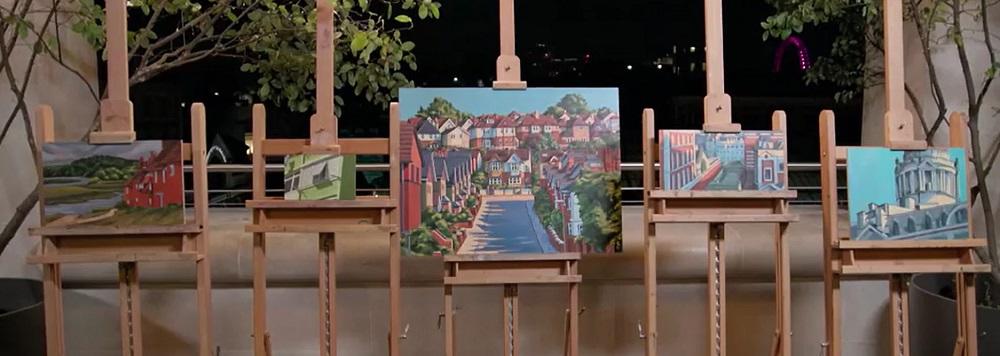
Across the series we became familiar with your signature style; a love of colour, warm tones and strong, directional light inspired by the Mediterranean light you enjoyed growing up in Gibraltar. Can you walk us through your colour palette and how you mix that warm, burnt orange underpainting colour we saw?
My colour palette is definitely inspired by growing up in Gibraltar. Even when I was a student at Loughborough University I was always chasing those warm tones in photography, print and painting. I start my paintings off with a wash of Winsor & Newton cadmium orange hue which helps me keep that warm hue when painting. My colour palette consists of only four colours which is titanium white, azo yellow medium, cadmium medium red and phthalo blue. I never use black as I find it too harsh and I never use titanium white on its own. I always mix it with a small amount of yellow or red to warm it up.
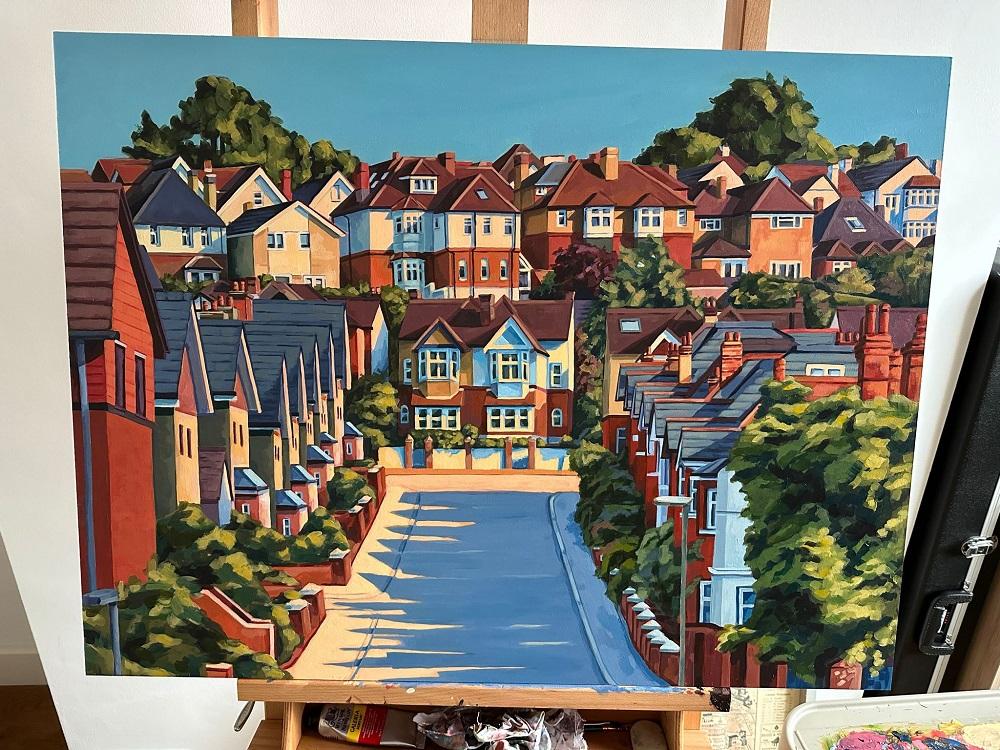
As part of the final, artists are tasked with creating a commission in their own time, so the judges get to see the work you can create without time constraints. Your painting of the street you live on in Guildford depicted houses in bright directional sunlight with a deep shadow falling across the street. What is it about this type of light in a landscape that fascinates you and what do you think it brings to a landscape painting?
When we first moved to Guildford that view really caught my eye so when we were tasked with commissions for the final I knew I had to paint it. I wanted to bring Mediterranean light to Guildford so the warm whites and the vibrant blues were very important. This was the first time I’d tried this colour palette on a street that was very obviously British. Bright directional light causes harsh shadows and tones which I love painting. My use of colour is quite flat so when I paint harsh shadows, it gives my paintings more depth. The contrasting effect is fascinating when using vivid blues and purples against bright oranges. It always makes for a really interesting painting and I think it’s going to be a long time before I get bored of this colour palette!
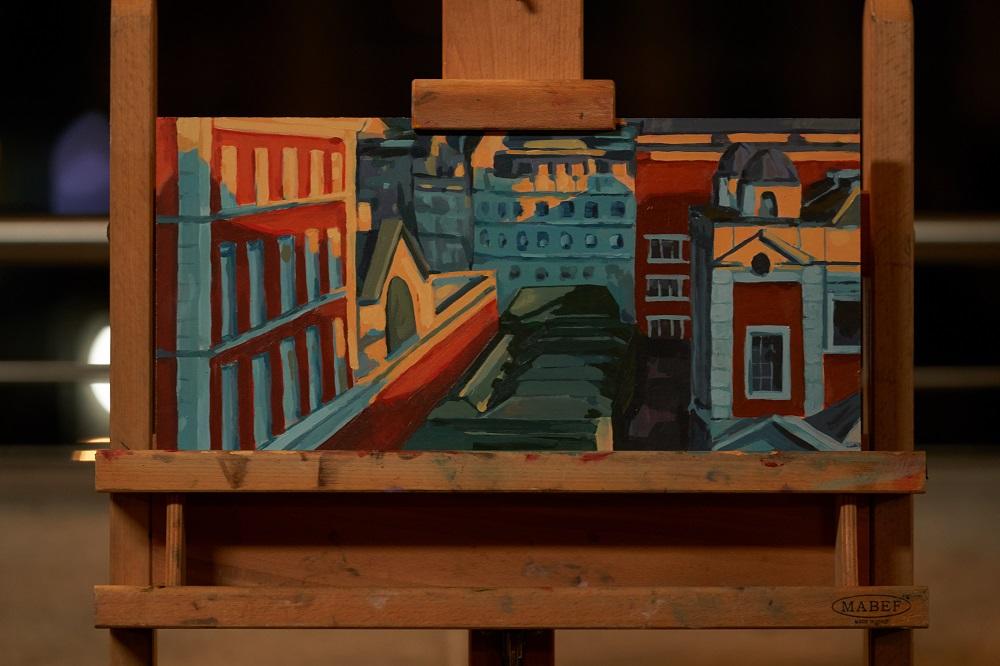
In the final we watched you, Denise Fisk and Kristina Chan take on one of the most challenging scenes we’ve seen yet on the program. Positioned on the terrace atop the Royal Opera House in Covent Garden London, you were faced with a sea of rooftops of varying architectural styles. Not only that, but across the 4 hours, the light changed from daylight to dusk, to darkness! Take us through how you tackled the challenges on the day.
The view was very overwhelming at first glance and I knew straight away I would have to edit a lot out. As it was a very panoramic view, I decided to paint on a long board and cropped out the sky and the street. This created a slice of the landscape which focussed on the spaces of buildings and windows. When we arrived it was raining but the sun came out once we started painting. As it was during the evening, we got the glowing sunset light and great shadows on the buildings so I focussed on that. The perspective was so difficult and I did not have time to make sure everything was accurate, so my priorities became the colours of the landscape and capturing that glow from the sunset.
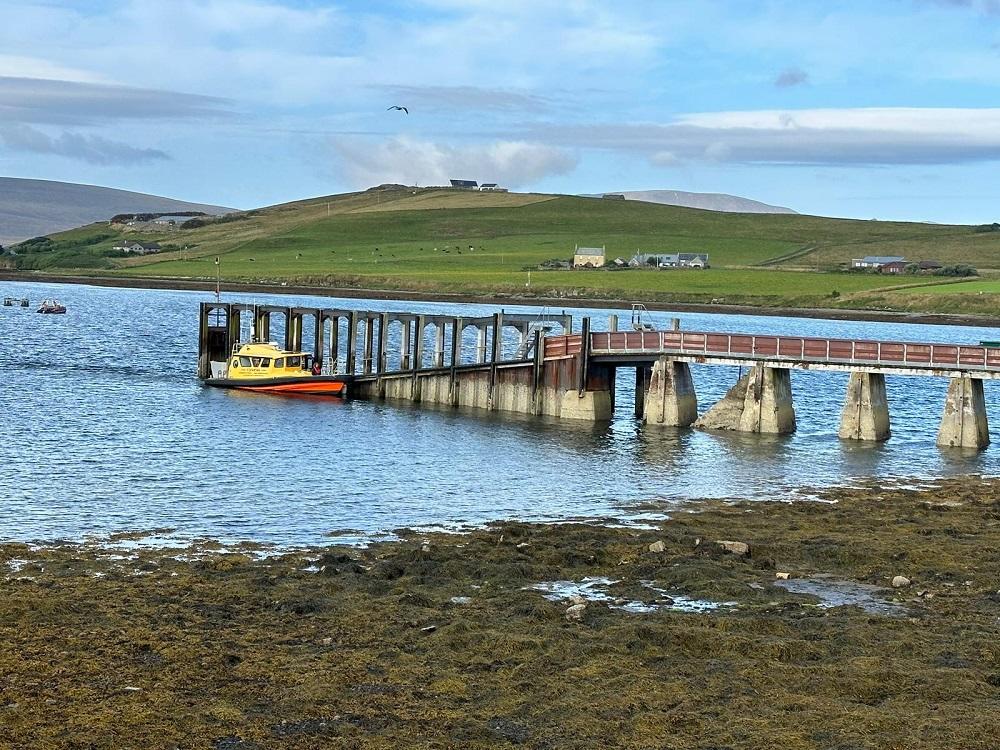
For your £10,000 commission, you were taken to the Orkney Islands which are leading the world in renewable energy and technological innovation. Contrary to the built environments the landscape set a very different scene, with vast skies and flat landscape punctuated by the towering wind turbines. How did the experience of meeting experts and learning about the work they are doing in this area help inform your final piece?
It was amazing meeting everyone from a range of different industries in Orkney. I learnt about the history, the art and the science which helped me in deciding my composition. It was eye-opening and inspiring hearing their stories and seeing Orkney through their eyes. This part of my trip undoubtedly influenced my painting in terms of what I felt needed to be included in the painting.
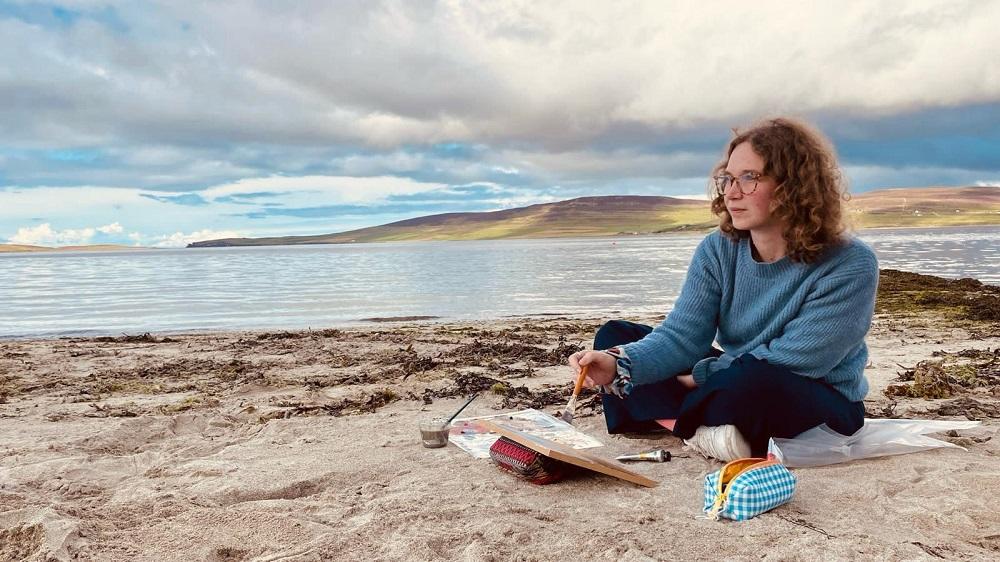
You made a number of preparatory sketches and paintings at Orkney, using inks, oil pastels and acrylics. How do these help you make decisions about the final work? Can you walk us through your thought process?
I don’t normally do sketches for paintings as I’m very quick in making decisions about compositions, but this situation was completely different. I’ve never taken on a commission like this before and it was a landscape that I wasn’t very comfortable painting so those sketches were very informative. They helped me figure out the colour palette of Orkney and I learnt a lot about the shapes in the landscape. My final study of the turbines standing on the hill like lonesome figures and the rolling clouds was the most important study. It was at the end of the last day and I already had a rough idea of my composition for the commission, so that painting gave me a real sense of the colour palette and mood I wanted to capture.
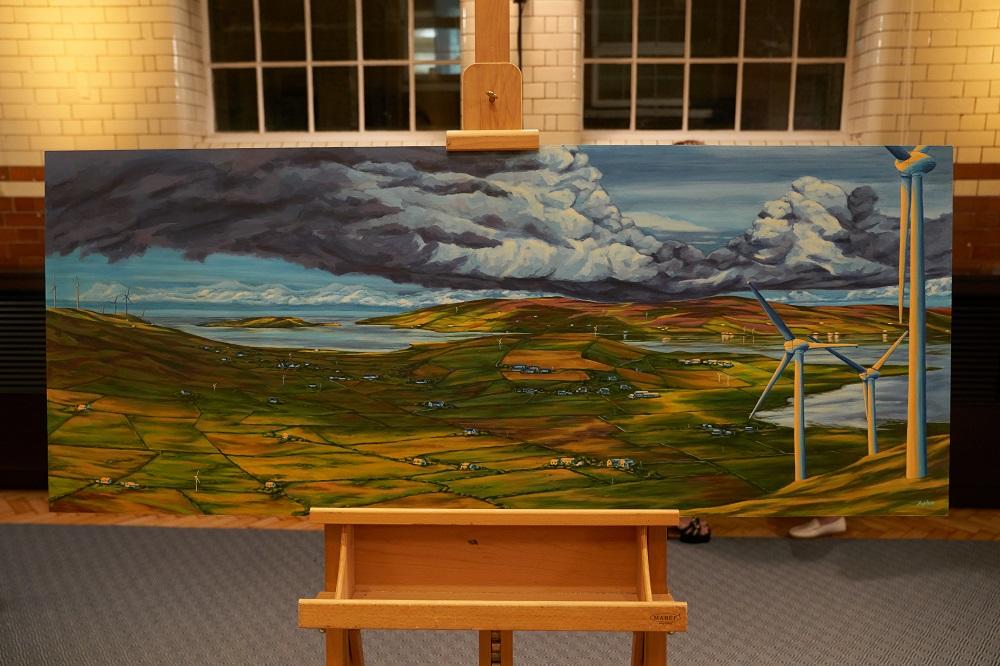
The final piece beautifully captured the Orkney Islands, with rolling ominous clouds giving the sense of the wind rushing through the landscape, driving those turbines which seem to survey the land they are powering. You even managed to incorporate shadow - cast from the cloud. It’s an ambitious work, how did the composition come together and do you feel it conveyed everything you hoped it would?
Thank you, that’s such a beautiful description! I didn’t have my lightbulb moment for the commission until our last day in Orkney. I’d just learnt about Eynhallow, which is a small island that is renowned for its turbulent tides and afterwards we visited a wind farm. Standing on the hill of the wind farm, we were overlooking the most amazing view of wind turbines on hills, farm houses, Eynhallow and the mainland of Orkney and I just knew this was my painting. It captured the stunning landscape, the turbulent currents and the technology. Matching the shadow on the ground to the sky was really tricky and took lots of editing! The image I was working from was a patchwork of images I’d taken from the wind farm so this painting definitely challenged me in more ways than one.
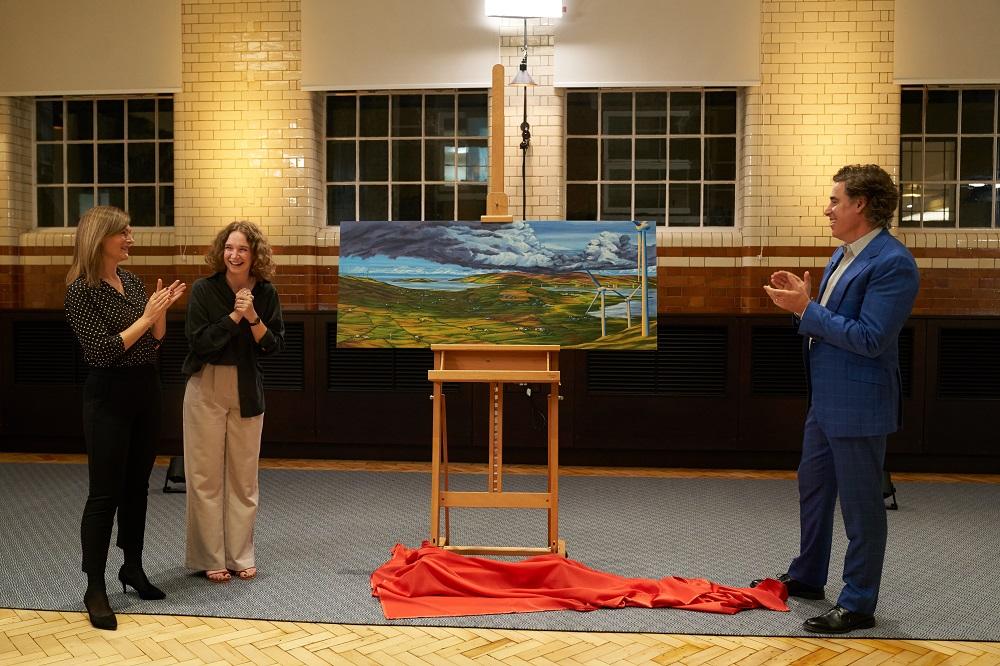
Your commission was revealed at the prestigious Science Museum in London, where it was warmly received and will be on display to 3 million visitors each year! As a young artist, how do you hope this will impact your career as an artist?
It still feels unreal reading that! I hope the experience and exposure from being on the programme and completing the commission opens a few doors for me that might not have opened before. This is the first time in my artistic career that I have not needed a 9-5 to support me so that in itself feels like a huge milestone!
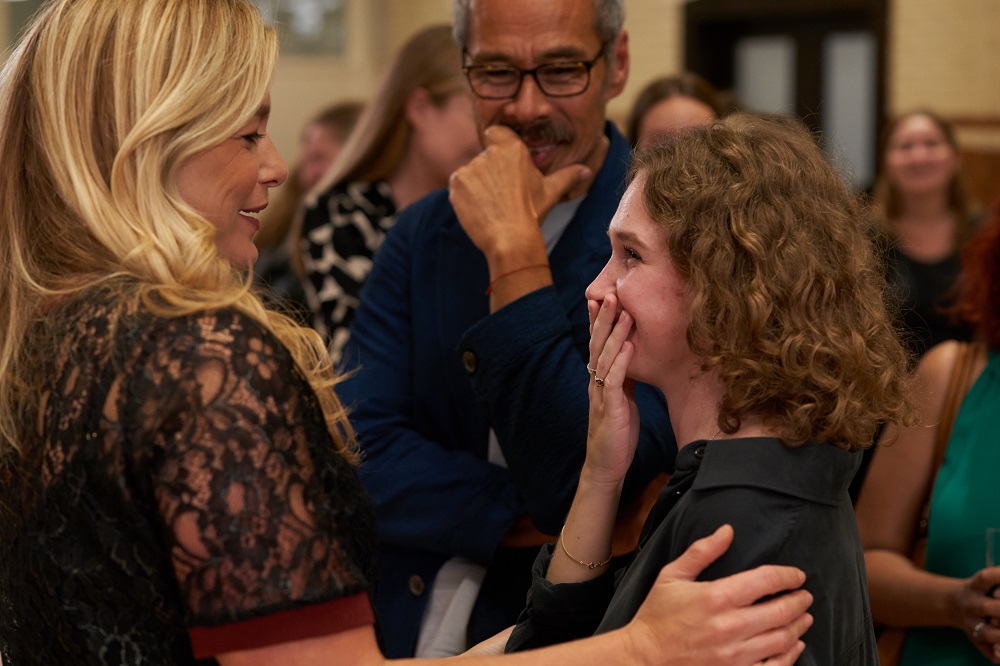
What advice would you give to artists considering applying for the next series?
I would tell everyone who is considering it to just give it a go! I was apprehensive about entering as I didn’t feel like I was ready to tackle the challenge of painting under a time constraint and being filmed but I entered anyway. This whole experience has proven to me I am capable of so much more than I think I am.
And finally, now your winning commission is complete, what’s next for you?
I’ve been focussing so much on preparing for the programme to come out that I haven’t had the brain space to think about what comes afterwards! I’m so excited about the prospect of painting full time and taking on different kinds of projects so we’ll have to see where we go from here. It’s all very exciting!
Thanks Monica! See more of Monica’s work @popham.studio on Instagram.
Feeling inspired?
If you've admired the works on the series, visit skyartsartistoftheyear.tv where selected artworks from all nine series, as well as from Sky Arts Portrait Artist of The Year, are now available to buy.
Read our interviews with all of the Series 9 Heat Winners and Wildcard artists on the Cass Art blog here.
If you think you have what it takes to be the next Sky Arts Landscape Artist of the Year, entries for Series 10 close at midday on Friday 3rd May 2024. Find out more and apply at skyartsartistoftheyear.tv/landscape. Good luck!



